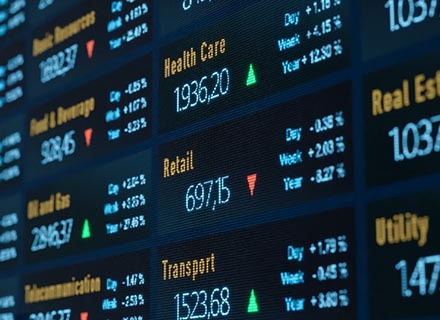Fear and panic among traders can produce volatility. As “noise trader risk,” trend-following traders who lose control of their emotions and sell or purchase massively are in danger. Whether favourable or negative, large news events can trigger big price moves in a jittery market with apprehensive investors.
Wars, revolutions, famines, droughts, strikes, political instability, recessions, depressions, inflation, deflation, large industry bankruptcies, and supply and demand swings can plummet stock prices.
Some huge hedge funds and private equity firms with excessive debt from stock market investments have had to sell assets in a dropping market to pay off margin calls. These large-lot sales also affect stock prices.
S&P Global found that rapid oil price movements affected the most volatile market sectors in the 2010s (December 31, 2009–December 31, 2019). Here are the top eight sectors with the largest standard deviations, in descending order.
Standard deviation assesses an investment’s volatility by calculating its yearly rate of return.
Energy
This sector includes oil, gas, coal, biomass, geothermal, hydrogen, hydroelectric power, ocean energy, solar, and wind energy. Based on Energy Select Sector Index results, this sector had the biggest standard deviation of 20.3% in the 2010s.
The spot price for crude oil fell from USD 113.93 per barrel on April 29, 2011, to USD 88.19 on Sept. 12, 2011.
Commodities
Commodities had the second-highest decade standard deviation at 18.6%. Commodities include natural resources, precious metals, and agricultural products. A commodities exchange-traded fund (ETF) may hold gold, silver, oil, gas, grains, or beef.
Financial
Banks, brokerage firms, financial services, insurance companies, credit card issuers, financial planners, stock exchanges, and commodities exchanges dominate this industry. This sector was very volatile during the 2007-2008 financial crisis and Great Recession. The financial sector standard deviation was 16.8% in the 2010s, the third highest.
Technology
S&P Global’s fourth most volatile sector was technology, with a 14.8% standard deviation. The tech industry offers many products and services. It covers consumer electronics including computers, phones, TVs, and appliances.
The industry supplies hardware, enterprise software, cloud computing, and logistics solutions to enterprises. Famous companies in this industry include Apple, Amazon, Google, and Microsoft.
Customer Choice
The consumer discretionary category trailed technology with a 14.6% standard deviation. This sector includes retailing, media, consumer services, consumer durables, luxury goods, clothes, cars, and auto components. Other consumer discretionary industries include hotels, restaurants, and leisure.
Communication Services
Communication services ranked second with a 14.1% standard deviation in the 2010s. Phone, wireless, cable, data, Internet, equipment, media, and entertainment corporations dominate this sector. Meta, formerly Facebook, Alphabet, Netflix, The Walt Disney Company, and AT&T are in the Communication Services Select Sector Index.
Medical Care
Based on Health Care Select Sector Index results, this sector was 12.4% volatile in the 2010s. This industry includes hospitals, doctors, dentists, medical equipment, suppliers, and vendors. Healthcare investors may invest in pharmaceutical, biotech, health insurance, and pharmacy benefit management companies.
Utilities
Last on our list is utilities, which had an 11.8% standard deviation in the 2010s. Companies in this sector offer water, sewage, energy, dams, and natural gas. Compared to other sectors on this list, utilities are less volatile. This sector’s enterprises are strictly regulated and provide dividends. Utility equities attract long-term investors due to their stability and income.
Small gains are usual for the stock market. Volatility is any up or down divergence in a stock’s price from this trend. Investors fear volatility. Prudent investors seek steady, predictable markets with little volatility and stock price movement.


